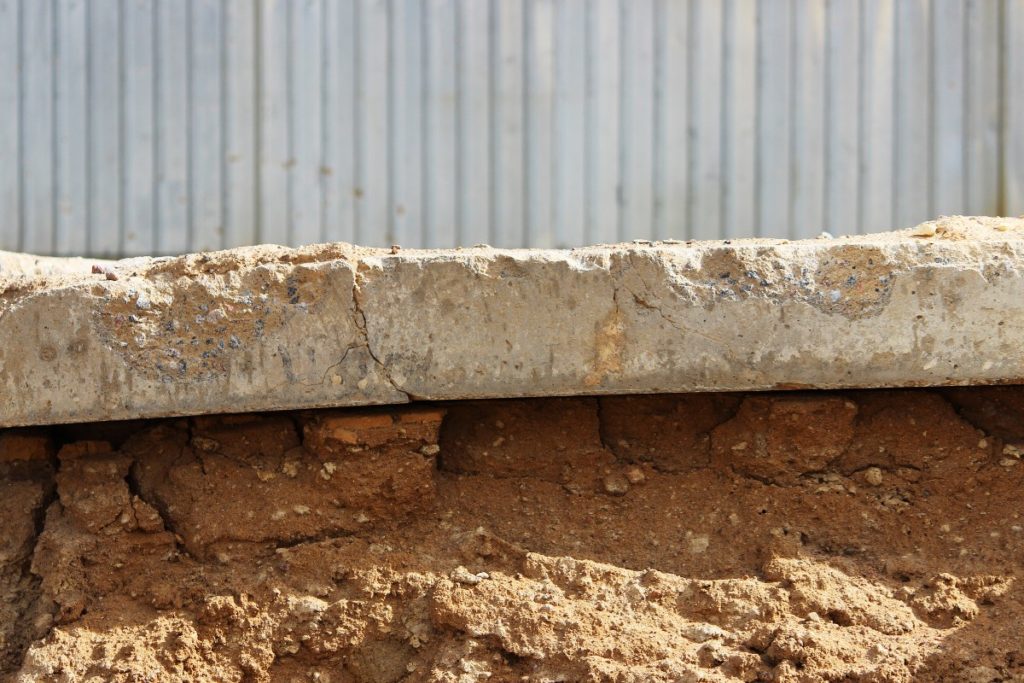Mudjacking is a timely and cost-effective way to restore damaged or sagging concrete. But when can you start using the newly rejuvenated surface? Read on to learn how long mudjacking filler takes to dry, and find out why it’s such an effective solution for sunken or settling concrete surfaces.
Quick and Reliable
It’s quite common for homeowners to overinvest in total concrete replacement when a much more affordable option is available. The costliest way to repair damaged or sinking concrete, wholesale slab replacement is only needed in severe circumstances. In many instances, mudjacking is enough to rejuvenate cracked or sinking concrete.
A cost-friendly, time-tested option, mudjacking is a very reliable way to restore sunken or settling concrete to its original, durable position. It’s one of the most popular solutions for both businesses and homeowners in need of timely repairs that won’t bring unmanageable costs.
The process is relatively simple: After drilling a small entry hole through the existing concrete surface, the mudjacking contractor injects a wet slurry filler into the gaps below the surface. This fills the voids and elevates the concrete until it is entirely flush with the adjacent ground-level surface.
Mudjacking generally costs about 60% less than full-scale concrete replacement, making it a great choice for budget-conscious homeowners. It’s also a quick, efficient way to rejuvenate damaged concrete, so it’s ready for everyday use. The entire process can usually be completed in a single day, often within only a couple of hours.
That said, although it generally only takes a few hours for mudjacking to dry, it can take a day or two for the filler to cure, depending on the weather and any unique circumstances surrounding the project. This is why it’s so important to work with a reputable contractor who can provide expert guidance on when you can start using your restored concrete surface.
Hiring the Right Contractor
For dependable, top-quality mudjacking, you need an experienced concrete contractor. It can take years to fully master this skill, and a lack of expertise can lead to unreliable results.
If you’re hoping to restore your sagging concrete, it’s very important to hire a professional contractor who’s been in the mudjacking business for more than a few years. With a seasoned contractor, you are much less likely to have problems and much more likely to end up with longer-lasting results.
Acting Quickly
If your concrete is showing signs of trouble, it’s best to act as soon as possible. Tiny sags and cracks can create risky tripping hazards that can leave you exposed to liability issues if someone falls and injures themselves. Sagging concrete can also threaten the structural integrity of your property, especially if it is left to get worse over time.
If you ignore minor concrete repairs, you are risking major problems that may not be correctable with simple repairs. If you don’t act as soon as possible, you might be forced to completely remove and replace the entire concrete surface, which can be very expensive.
In some instances, restoration can include, not just the horizontal concrete surface, but walls, foundations and columns. Since early concrete repairs generally cost much less than complete concrete replacement, it’s best to act fast whenever you notice sagging or cracked concrete in or around your house or business.
For more than 20 years, AAA Concrete Raising has served businesses and homeowners throughout the Denver metro area. Our skilled, experienced professionals know how to do the job right, and our innovative equipment removes the need for awkward, noisy machinery. This ensures a fast, efficient job that won’t disrupt your home or local neighborhood.
AAA Concrete Raising brings leading-edge expertise and top-quality materials to completely fill underlying voids that cause concrete slabs to shift, sink and sag. This ensures a safe, functional surface while helping homeowners avoid the high cost of total slab replacement.
